We left stage 1 of our walk from the Tower of London to Bank arriving at Bank along Cornhill.
This next stretch of the walk is all about columned architecture. From the Royal Exchange to Mansion House and the Bank of England, finishing at the majestic St Paul’s Cathedral, each has a palatial grand facade designed to show off wealth and importance.
These guides focus on the practical aspects of the walk and do not aim to replace a comprehensive guidebook for London. With a reliable London street map or a mapping app on your phone, you’ll easily navigate this route and feel free to make interesting detours and adjustments along the way.
Bank of England to St Paul’s Cathedral Walk map
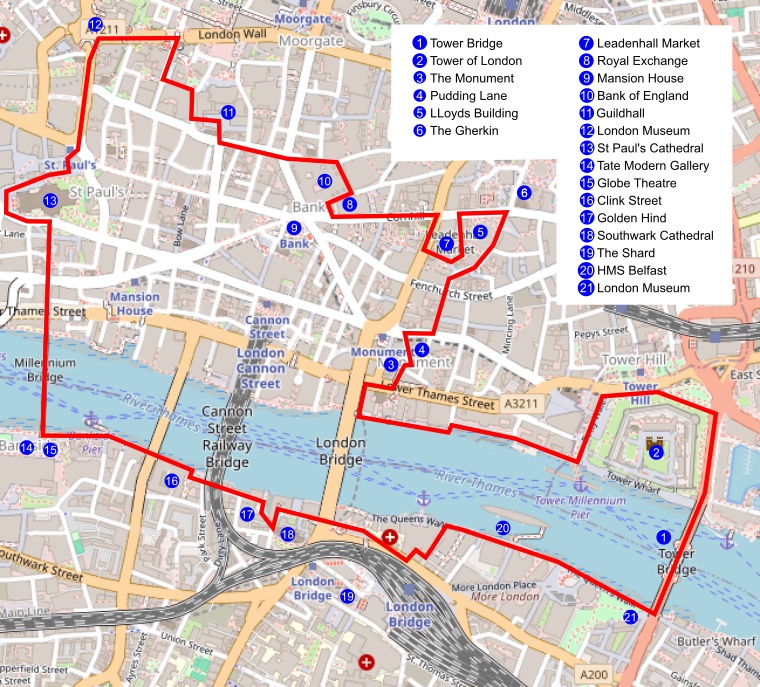
Royal Exchange
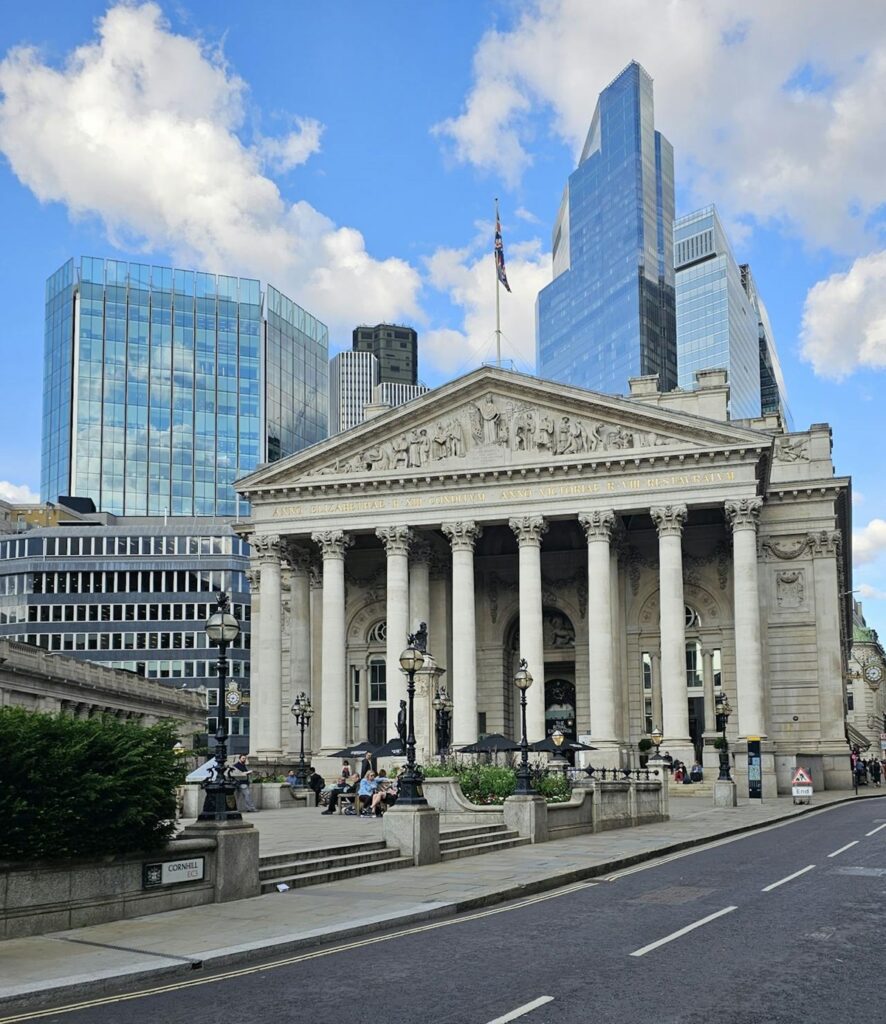
Bank is a major intersection of roads additionally featuring Bank underground station, served by five lines of the London underground. At the eastern corner of Cornhill stands the most striking structure at this junction, the Royal Exchange, as shown in the image.
In 1842, they built the current Royal Exchange building with its 8 imposing columns. It no longer serves its original purpose, trading; instead, it operates as a luxury shopping centre.
Mansion House
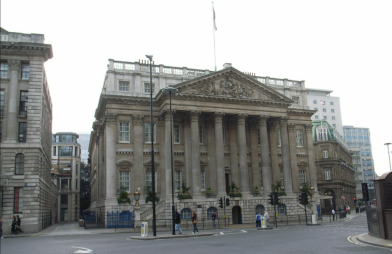
Opposite the Royal Exchange on the other side of the junction is Mansion House, with a similar grand entrance of columns.
The Mansion House is the home of the Lord Mayor of the City of London (note as distinct from the Mayor of London), providing not only living and working space for the Lord Mayor and his household but also room for large ceremonial entertainment and banquets.
The audience are the grandees of the City around you, mostly financial. The City of London has always been very powerful, financing trade on which England prospered and today is one of the main financial centres of the world.
The Finance Minister of the UK will often use use the banquets of the City of London to make political statements on the economy. The building like much else around was built soon after the Fire of London, with the Mayor moving in in 1752. Unfortunately you cannot walk in off the street to look around.
Bank of England

The most important building at Bank, is the Bank of England, another columned masterpiece of architecture.
The function of the bank today is to design and issue bank notes, store gold and act as the governments banker. The Bank of England has an interesting museum, which has free entrance. Open Monday to Friday.
So go down Threadneedle Street, the street to the left of the Royal Exchange and take the first turning left, Bartholomew Lane. The museum entrance is on the left hand side down Bartholomew Lane.
Guildhall
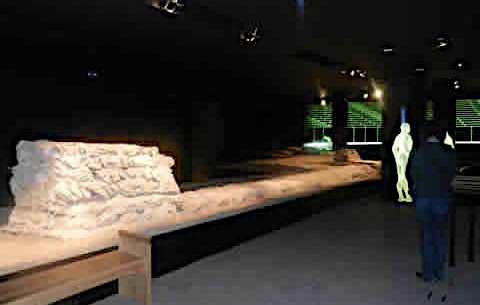
After visiting the Bank of England Museum, continue down to the end of Bartholomew Lane, then turn left into Lothbury. Follow Lothbury, which quickly becomes Gresham Street.
The fifth turning on your right is Guildhall Yard, the one after Basinghall Street. Guildhall Yard leads you into an open square.
Guildhall is at the eastern end of the square, pictured right. This is the administrative headquarters of the City of London, the City’s local authority for over 800 years.
Guildhall is also used for the presentation of the Booker Prize, the best known literary prize in the UK. Guildhall is open free of charge to the public when it is not being used for events. Adjacent to Guildhall is its art gallery, for which there is an admission charge.
The ruins of London’s Roman Amphitheatre, in which crowds would once have gathered to watch wild animal fights, public executions and gladiatorial combats are beneath the art gallery. Lost for centuries, the original circular walls were rediscovered by archaeologists working on the site of the new Guildhall Art Gallery building in 1988.
Museum of London
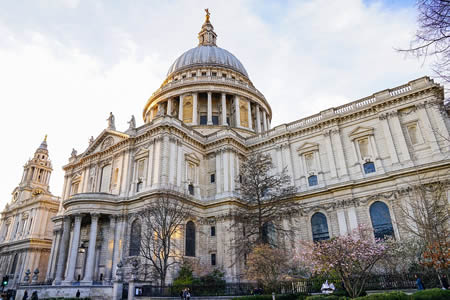
Exit the square at its western end, opposite the Guildhall itself into Aldermanbury, turning right. Then turn left into Love Lane, then immediately right into Wood Lane, then left again along a major road, (London Wall).
Continue to the roundabout about 200m down the road.
The London Museum is one of the most well hidden museums in London. You are now surrounded by tall modern buildings. The London Museum is physically in an elevated position up above the north eastern corner of the roundabout.
Best strategy is just to follow the signs to the museum along the maze of walkways. The museum itself is open 7 days a week and has free entrance. It has over a million exhibits telling the story of London and is very professionally done. There is also a section of the original London Wall.
St Paul’s Cathedral
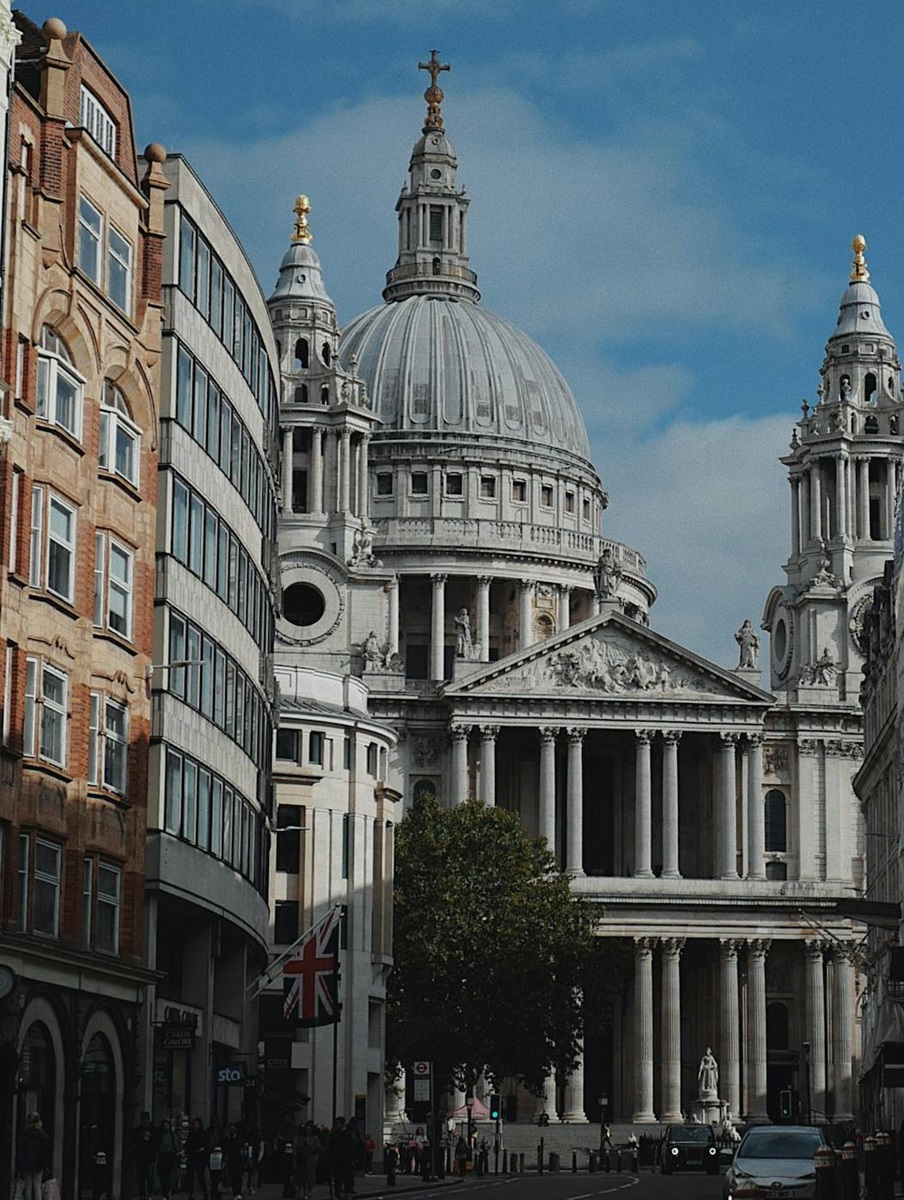
On leaving the London Museum you want to descend to the southern exit of the roundabout below, the road is called St Martin’s Le Grand. Follow this road for about 300m until you come to a major intersection with St Paul’s Underground Station.
Cross over to the south western corner of the intersection and then make your way around to St Paul’s Cathedral.
St Paul’s Cathedral is the UK’s major cathedral and setting for many state occasions including royal weddings. The dome is the masterpiece of the building, erected after the Fire of London. We have a dedicated St Paul’s Cathedral page.
On leaving St Paul’s make your way to the south side of the cathedral, Cannon Street. There is a tourist office here and close by a wide pedestrian thoroughfare descending down to the River Thames.
Follow this wide pedestrian way which leads onto the Millennium Footbridge across the River Thames. The bridge is a pedestrian only suspension bridge built for the year 2000 celebrations. It become famous due to the fact that the walkway swayed so much it was deemed unsafe and shut down. The bridge has now reopened and offers a rigid platform to cross the River Thames without the noise of traffic.
On the other side of the bridge is the Tate Modern Art Gallery and Shakespeare’s Globe Theatre.
This is the end of Stage two of the London City Walk.
For information on the other stages please see: